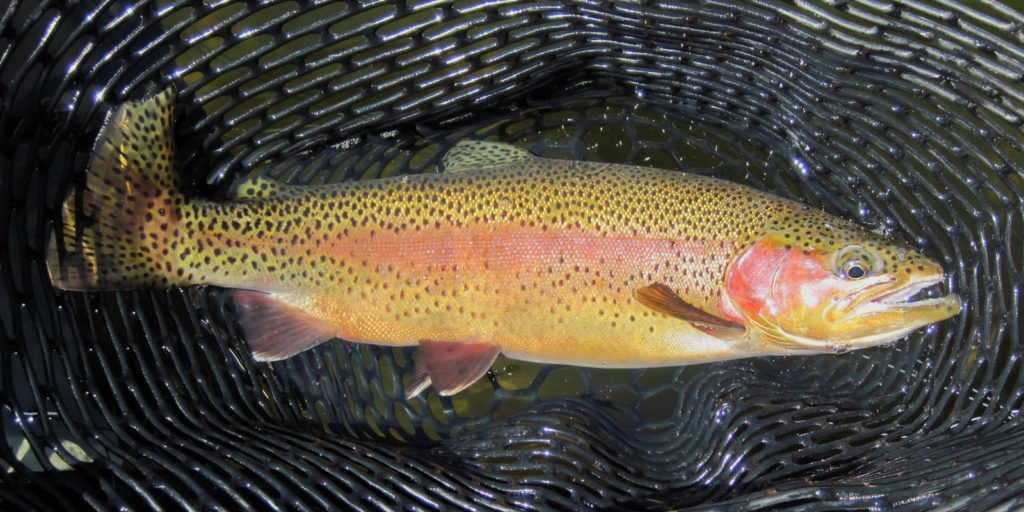
My first trip to Wayne Kirch was on April 1, 2005. It was a cold, windy day as I recall. I was the only fisherman on the water, and it was rough going in my Fish Cat tube. My notes from that day report that I landed just three rainbows. They also record three long distance releases (LDRs, as we call them) and three missed strikes. The notes blamed my poor showing on the cold weather and slow reflexes. Although I don’t recall that trip being particularly enjoyable, it was my maiden voyage to the Kirch WMA.
I first heard about Kirch (a.k.a. Sunnyside) in the 1980s. Merl Rees, the EG&G Energy Measurements Procurement Director, used to visit the area often. He fished from a boat (“The only way to fish Sunnyside”, he would say), and in that early season of my fishing life I was not into boats. In fact, I wasn’t into still water fishing much at all, preferring the more obvious strategy involved in stream fishing.
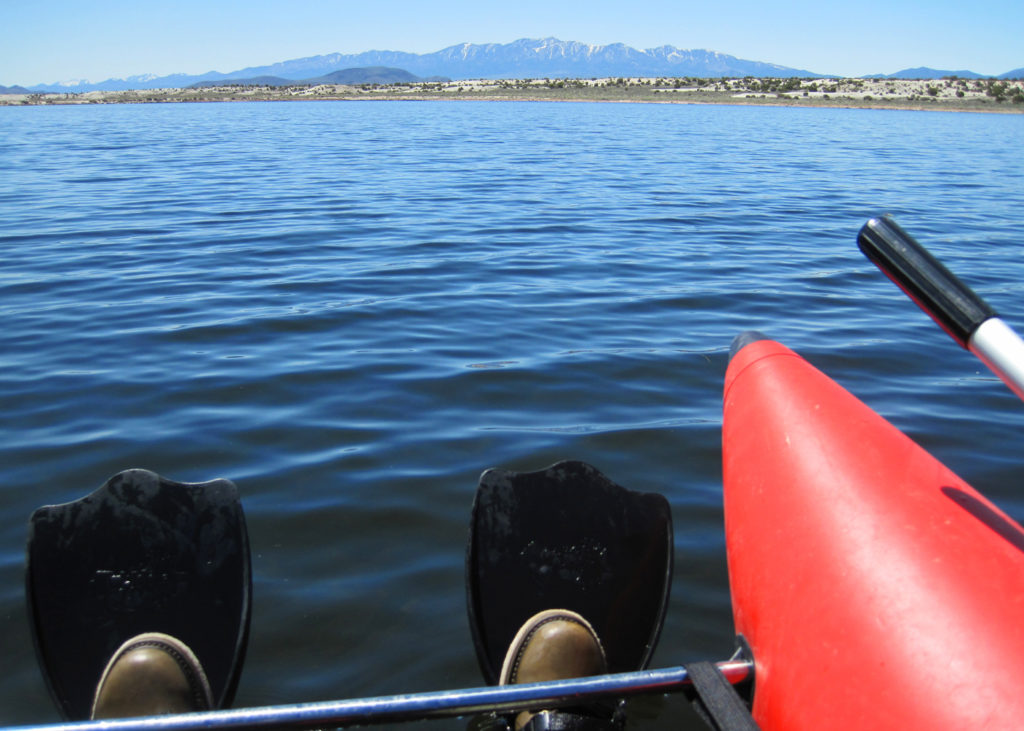
Isn’t it curious to look back in your life and see how much things have changed, or more precisely how much you have changed? When I was young, adventuresome, and strong I preferred hiking into the mountains and along the streams for hours with fly rod in hand, trying to escape the crowds and hoping for native or at least wild trout. While I still enjoy stream fishing very much, aches and pains keep me from attacking it like I did in my twenties and thirties. Age and experience has taught me that for the most part, bigger fish are found in bigger water, not to mention that floating still waters on my butt is a pretty easy gig. Sometimes those nostalgic look-backs can bring melancholy, and if we are not careful we can find ourselves pining for our youth. While I do have fond memories of all my youthful outdoor adventures, I think that dwelling on them in a manner that suggests unhappiness with the present is unhealthy. Although God created us to be eternal beings (Ecclesiastes 3:11), we clearly will not achieve that in this world; most of us will age and then die. He made us eternal for His purpose, to be in fellowship with Him forever. We recognize that while we are in this world, we are not of this world (John 18:36). And so, fond memories are good, but keep your eye on the prize (2 Corinthians 5:1-10). The point being, live in the present with God’s companionship.
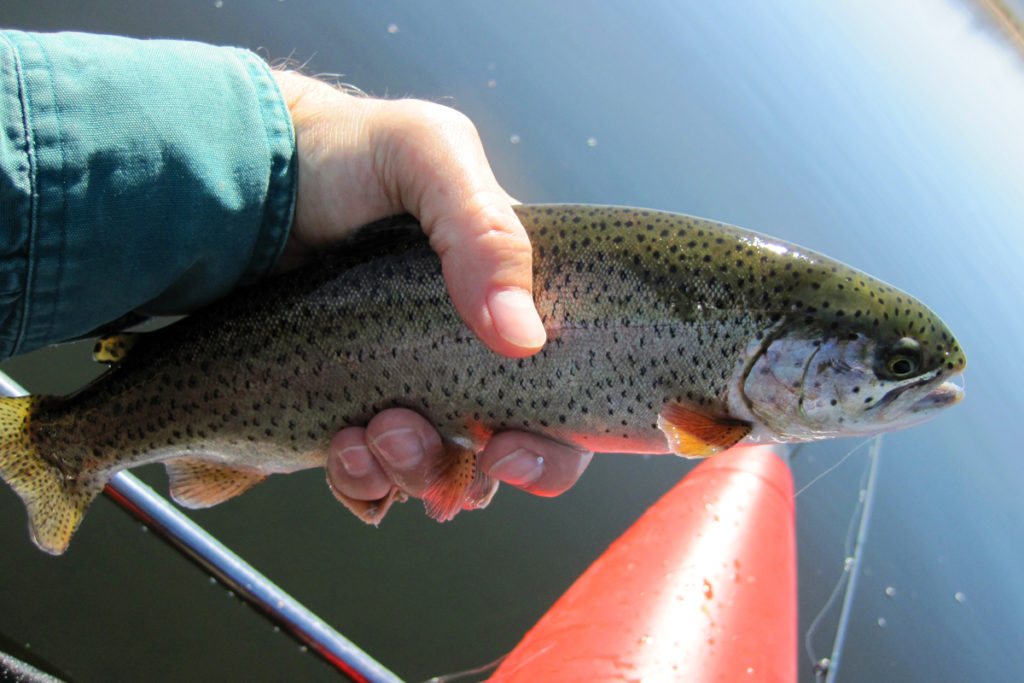
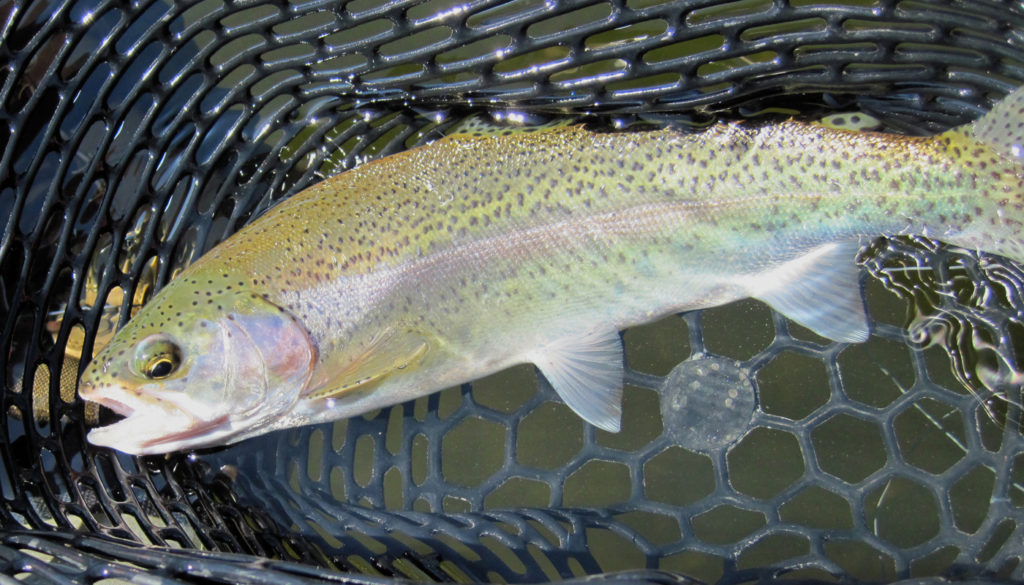
It took another two years before my second visit to Kirch WMA on May 3, 2007 . That trip produced thirty-three fish brought to hand (including five bass) in just five hours. I had forty hook-ups that day, an average of eight an hour. The two most memorable trout of that day were the eighteen inch hen fish and a seventeen inch male sporting an emerging kyped jaw. I’m certain that day is the reason why I continue to fish there so frequently.
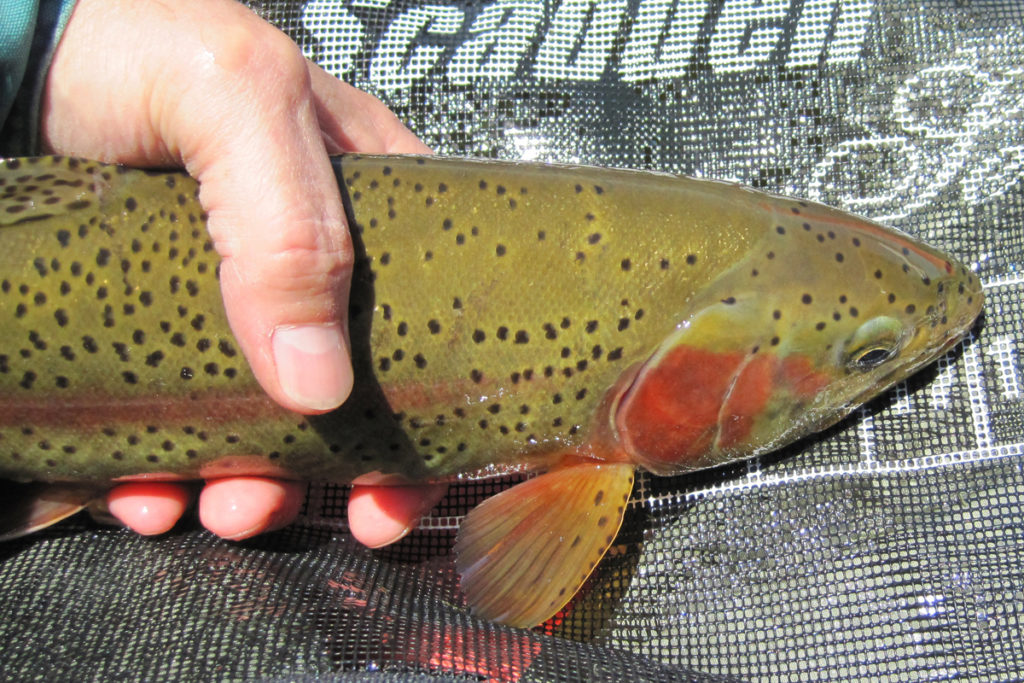
Ironically, almost four years to the day, Cold Springs produced a few more memorable fish. The weather was a cool fifty degrees when I arrived at 7:40 AM, but it warmed quickly, reaching close to eighty by the time I left at 4:15 PM. When I arrived there were two other boats with a couple-three fishermen each, and a handful of anglers on the dam. Throughout the day a few left and even more arrived. Still, it was not crowded (fishing on a Thursday surely helped that). I was the only fly fisherman on a tube; I think I saw a gentleman occasionally casting a fly rod while standing in his boat.
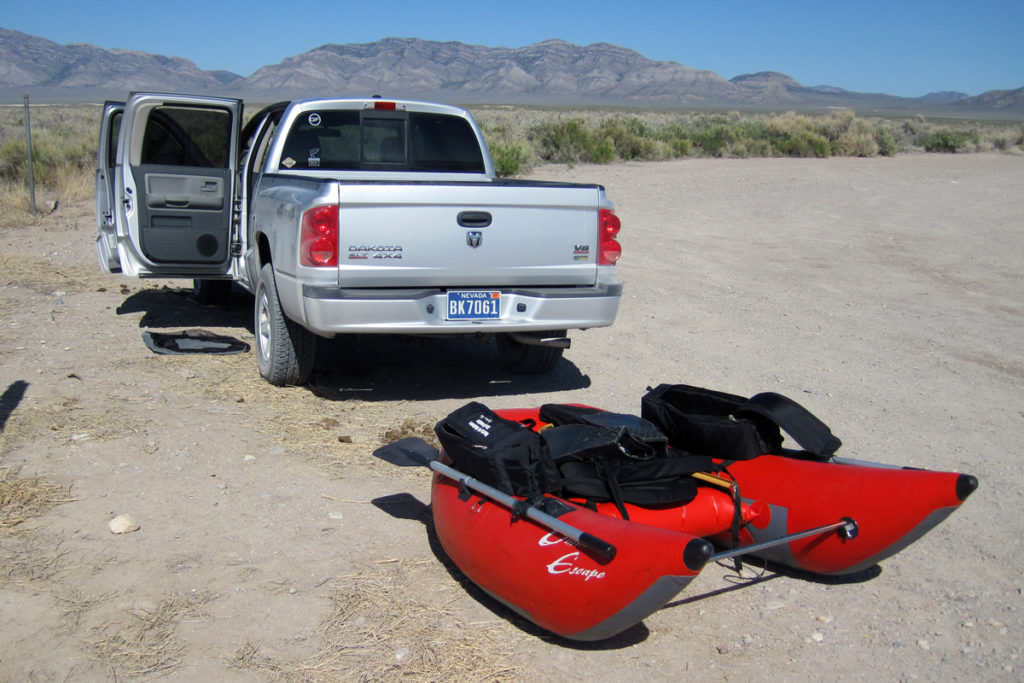
As is usual, insect and fish activity changed throughout the day as the temperatures warmed. Through most of the day I fished with my nine foot, five weight rod. I was using a full sinking line to cast woolly buggers and large nymphs, a pretty productive combination. I managed to land two sixteen to seventeen inch rainbows. They were darkly colored males (obviously in spawning mode) that were exhibiting significantly kyped jaws, much like the one shown on my May 3, 2007 blog report. I was amazed to see the signature red-to-orange lateral color carry all the way to their caudal tail fins.
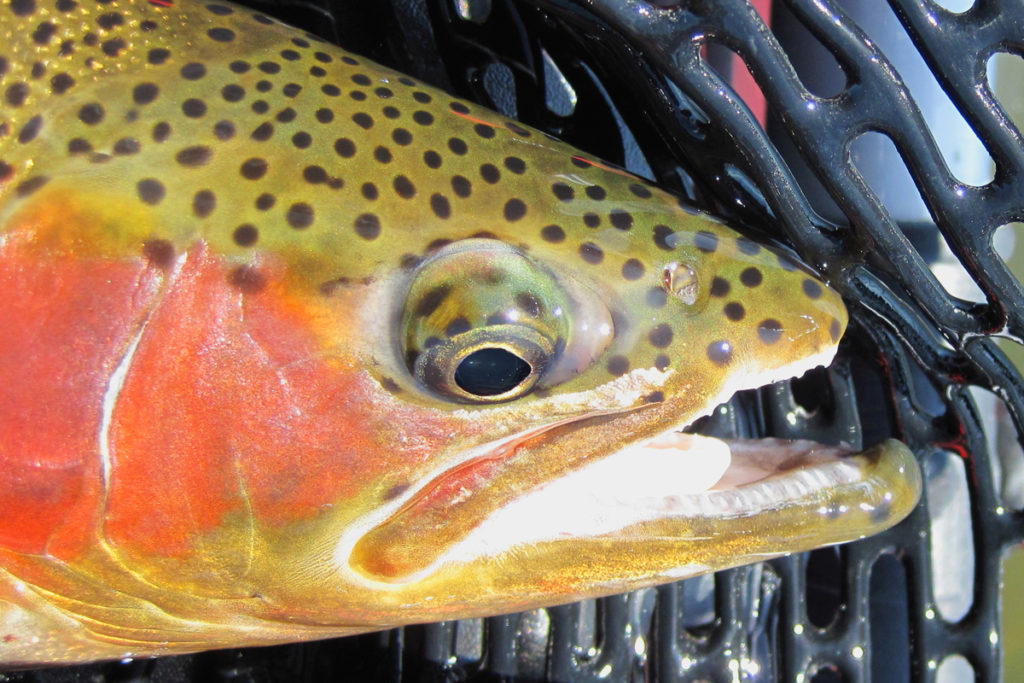
At about 3:00 PM I decided to row to the south-eastern corner near the dam and allow the wind to push me back toward the boat docking area for the last hour or so of fishing. I switched out the nine-footer with my little seven and one-half foot, four weight rod. It was pre-rigged with a floating line and a size sixteen parachute black gnat with a tuft of white fur for visibility (for my eyes, not the trout’s). My first dry fly cast was rewarded with a rise and take from a nice little twelve incher. I got a few more rises along the weeds from smaller trout, but size didn’t matter as that sweet little rod was a joy to cast. Besides, catching trout on the surface is a special treat.
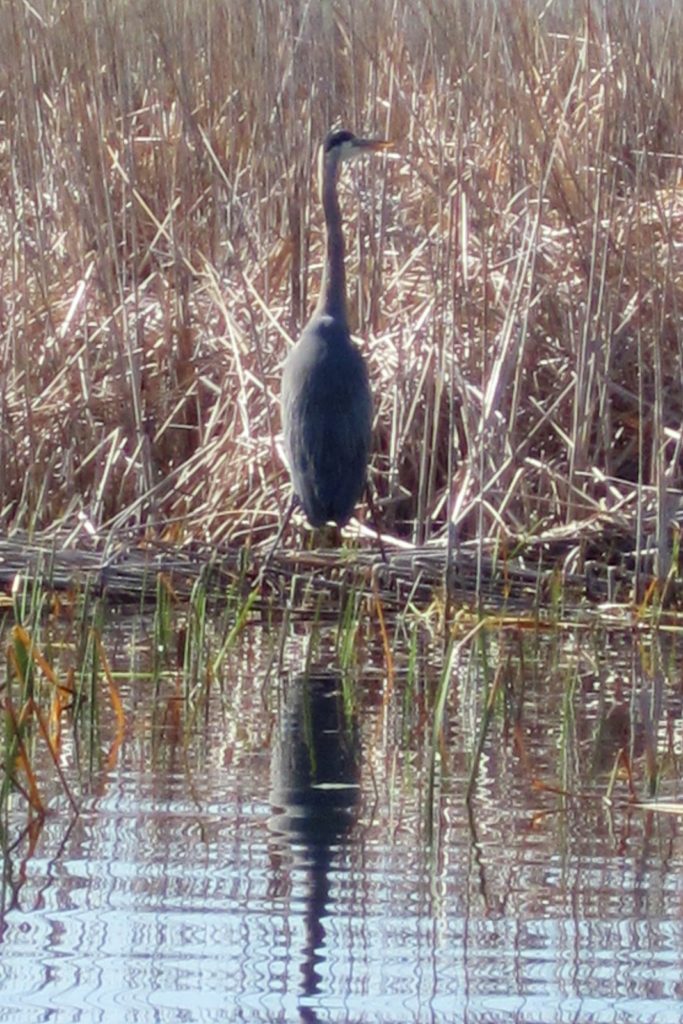
As I maneuvered into the boat docking area (imagine a thirty-yard channel through the water weeds) I noticed a blue heron staring intently into the water. Then I noticed trout porpoising along the dock. This reminded me of the situation that John and I encountered on Haymeadow Reservoir on April 1st. That morning we witnessed the fish hatchery truck dump trout and a school of them never seemed to leave the docking area. By the end of that day there still were large trout present which contrasted with the stockers. John suggested the larger trout were trying to spawn (a futile attempt as fertilized trout eggs need to be deposited in shallow redds of pea gravel under cold, flowing water); I thought that perhaps the hatchery dumped some spawned-out adults.
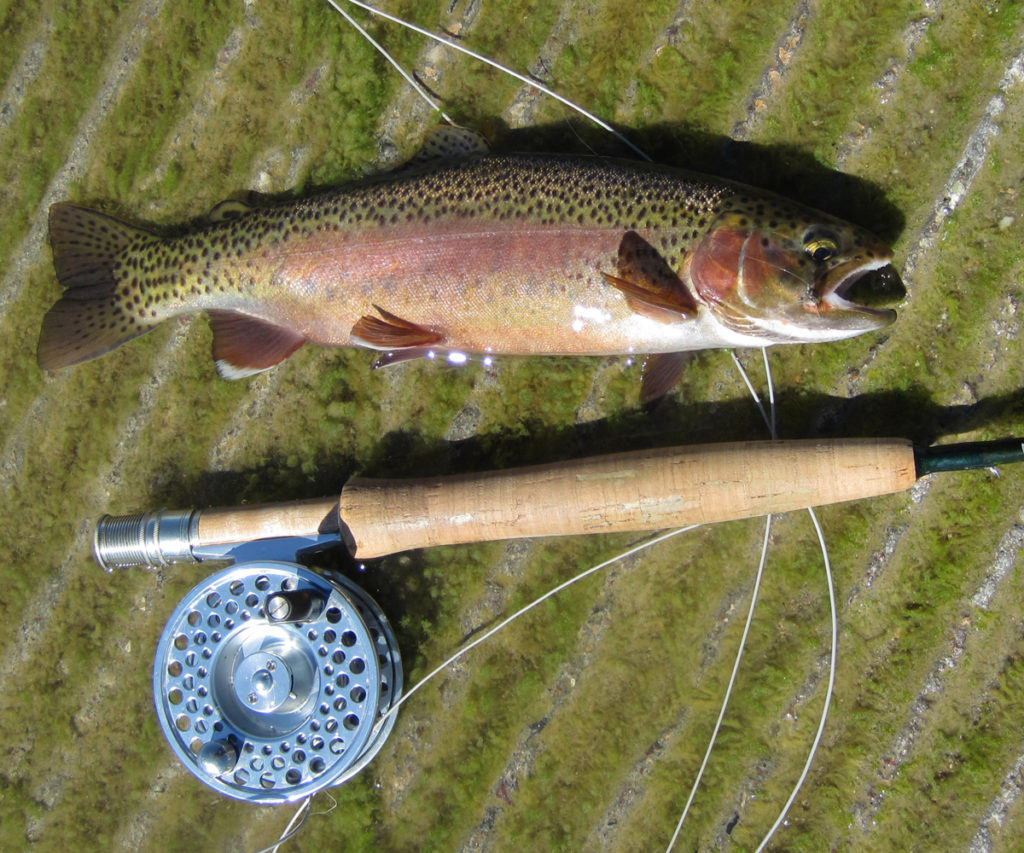
So, having experienced that strange situation last April, I kick-paddled the NFO Outlaw Escape to the rocky shore on the right side of the Cold Spring dock in order to be able to cast from a standing position. I caught several trout around the dock with the four-weight rod, but I could see there were larger fish not cooperating with me. I decided to walk around the dock and fish from the concrete boat ramp next to the left side of the dock. I then switched flies to a dark nymph (just like on April 1st) whereupon I hooked into a large male of just over sixteen inches. He was clearly there to spawn; John was correct about that.
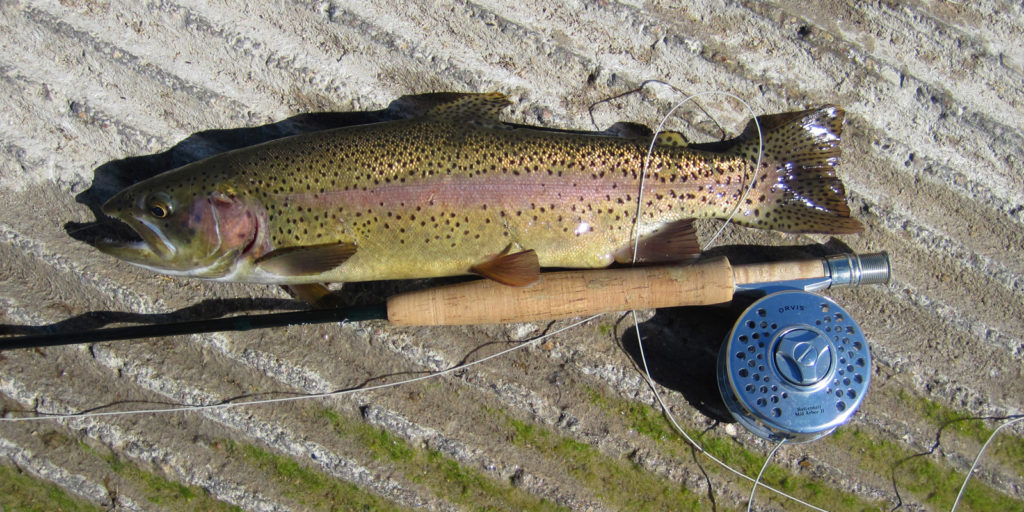
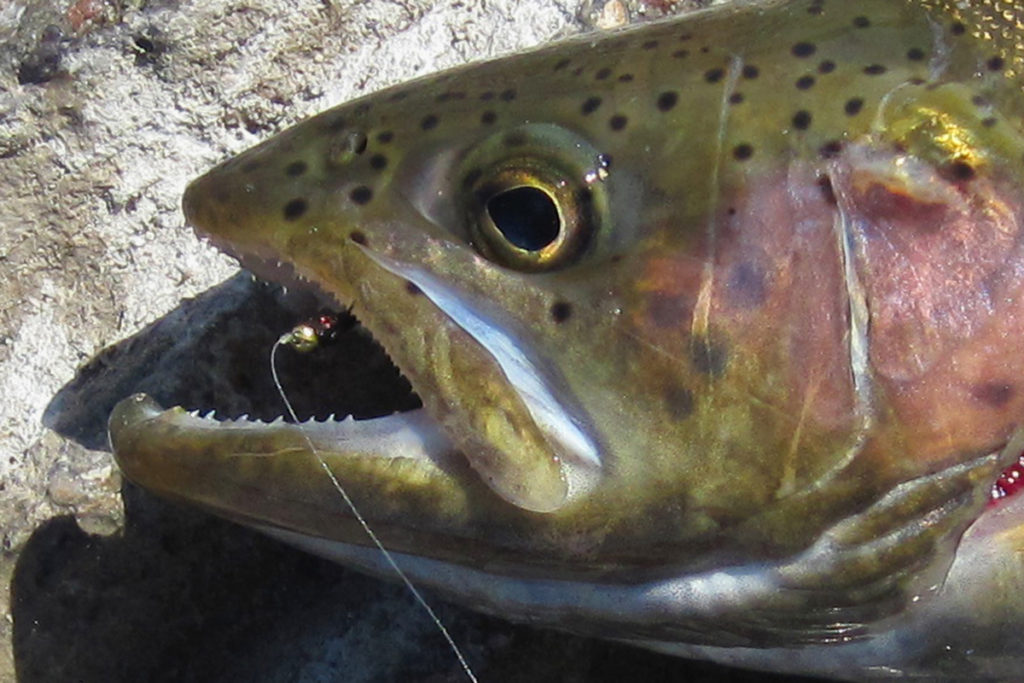
By the end of the day I am happy to report that my casting arm was sore, as was my right index finger (the grip I use to cast and play fish relies heavily upon my index finger). I had fished for eight hours, nonstop, without a potty break. Interestingly, I did not catch one bass on this warm day in early May. I did hook up with thirty-five trout, landing twenty-three of them (that LDR ratio seemed high to me, too). And three of them were large males, sixteen inches or better, displaying their kyped jaws and full spawning adornment.
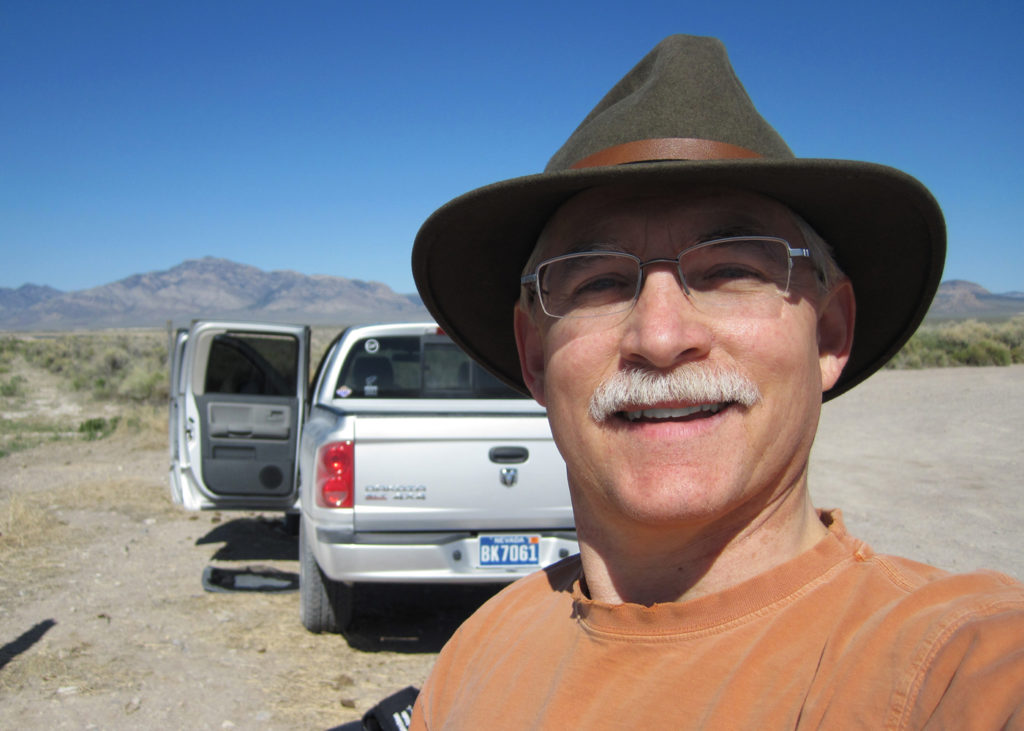
Thirty years ago I never would have thought fishing for trout while floating on a reservoir in the middle of the Great Basin high desert could be so much fun. Isn’t it wonderful how things change over time?
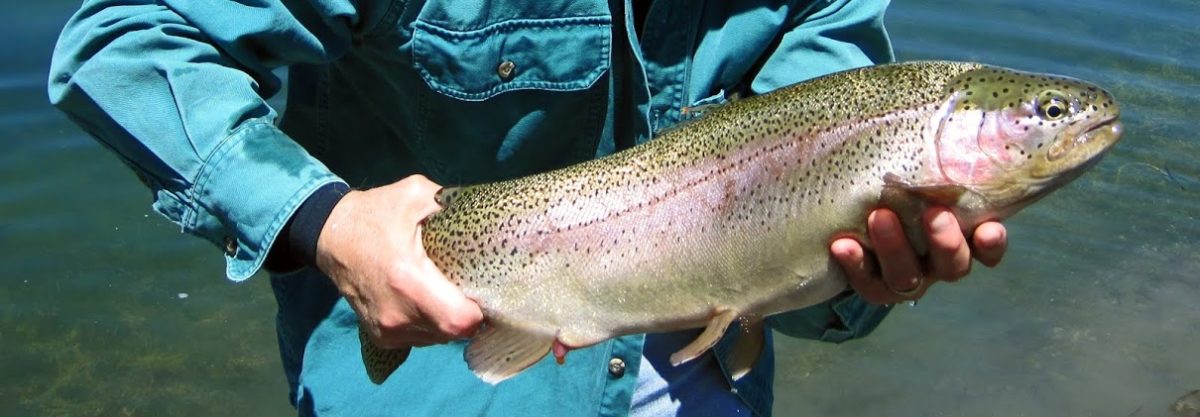
This comment is really meant for your 5/13 post about the cold creek pond. NDOW typically stocks it twice a year, however they're horrible about updating the stocking reports on their website. A better tab on stocking reports is to call the lake mead fish hatchery and listen to their weekly message about stocking reports. The pond was most recently stocked mid February so the rainbows are not just hold overs from the November stocking. I was there this evening fishing with a fly and bubble rig on a spinner rod and had great success. I was with a buddy of mine and he had a fly rod and was also very successful with dry flies (Royal Wolf worked best).
Thanks for the insight. I added a link to the Nevada Hatcheries page so folks can find the Lake Mead fish stocking report phone number (702-486-6738).
Regarding the fly/dropper setup, I would think that'd be highly successful. In fly fishing the technique is to drop a nymph off a highly buoyant dry fly which acts as the bobber. Sometimes they strike the dry fly, so there's a little "extra coverage", so to speak. Here's a great YouTube video of the technique: http://www.youtube.com/watch?v=pkrnqcxNSMw&feature=related.
Thanks again for the advice and insight.
All the best.